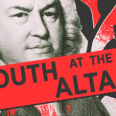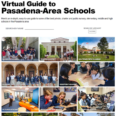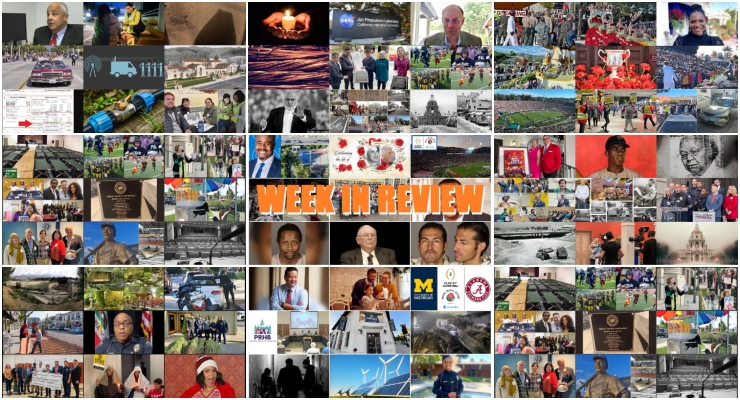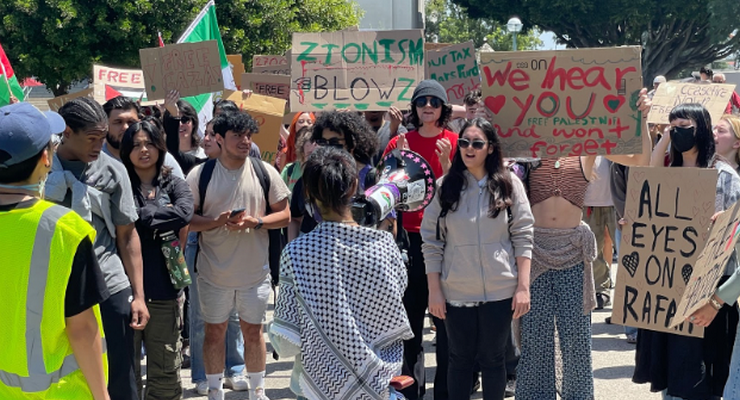 Recognizing that far too many communities, and particularly low-income communities, lack sufficient pedestrian, bicycling, and public transit opportunities, Assemblymembers Chris Holden (D-Pasadena), Eduardo Garcia (D-Coachella), and Richard Bloom (D-Santa Monica) unveiled a package of “transportation equity” proposals aimed at shifting California’s transportation investments to provide more access for all. The four proposed bills work together to provide better transportation choices so all Californians can walk, bicycle, and take public transit easily and safely.
Recognizing that far too many communities, and particularly low-income communities, lack sufficient pedestrian, bicycling, and public transit opportunities, Assemblymembers Chris Holden (D-Pasadena), Eduardo Garcia (D-Coachella), and Richard Bloom (D-Santa Monica) unveiled a package of “transportation equity” proposals aimed at shifting California’s transportation investments to provide more access for all. The four proposed bills work together to provide better transportation choices so all Californians can walk, bicycle, and take public transit easily and safely.
AB 2222, by Assemblymember Holden, would invest $50 million of cap-and-trade funds into a new transit pass program for all K-12 and college students.
“I introduced AB 2222 because I refuse to allow the high cost of transportation to be an impediment to receiving an education in our state,” said Assemblymember Holden. “The good news is that we can reduce our state’s greenhouse gas emissions while providing a safe, reliable and low, or no-cost means for California students to get to class, especially for at-risk students in some of California’s most disadvantaged communities.”
AB 2332, by Assemblymember Garcia, would put disadvantaged communities first when Caltrans determines which roads to maintain and improve, and prioritizes projects for funding that hire and/or train individuals with barriers to employment.
“California’s transportation system should truly serve all Californians,” said Assemblymember Eduardo Garcia. “Too many communities have been overlooked for years, suffering without even basic transportation infrastructure. Too many communities have no sidewalks or safe space to walk or bike, or even wait for the bus.”
AB 2796 and AB 1982, by Assemblymember Bloom, would increase the amount of funds available to improve bike and pedestrian safety in disadvantaged communities. The bills set aside a specific amount for disadvantaged communities and require that the California Transportation Commission contain two members who work directly with disadvantaged communities.
“We need our transportation system to work for all Californians and that starts with planning,” said Assemblymember Bloom. “Planning helps our communities identify their transportation problems and find the best solution to improve safety and mobility for everyone.”
Longstanding patterns of disinvestment and neglect have left many rural and urban communities, many of which are low-income, without safe and reliable walking and bicycling infrastructure, as well as affordable public transit options. Often those affected are children, working families, seniors, and students. These communities are often cut off from schools, jobs, and services by freeways or rail lines; tend to be the first to see cuts in transit service during tough economic times; and are left with crumbling and unsafe roads, and often lack sidewalks or bike lanes.
Inequitable transportation investments result in a greater number of traffic deaths in these communities, which have tremendous costs. Each traffic death is equal to about $4.3 million in economic costs and can disproportionately impact disadvantaged communities. For instance, Latinos and African Americans are more likely to live in disadvantaged communities and have high rates of pedestrian fatality (3.1 per 100,000 for Latinos and 2.8 per 100,000 for African Americans).
Transportation investments in low-income areas and communities of color have historically translated to expanded highway facilities that cut through communities, increased air pollution and traffic congestion, and have frequently neglected the impacted residents’ transportation needs.
Planning continues to be a huge need for active transportation—especially in low-resourced communities. According to the Governor’s Office of Planning and Research 2013-14 Annual Planning Survey, less than 50% of cities and counties reported an adopted Bicycle Master Plan and less than 1 in 7 respondents reported an adopted Pedestrian Master Plan. Planning funds enable the development of meaningful and transformative infrastructure proposals that make the most of our limited state dollars for active transportation, all while addressing community residents’ identified mobility and safety needs.
Public transit fares have risen significantly in many areas across the state. Expensive transit fares contribute to decreases in public transportation ridership. Reducing fares is likely to lead to an increase in ridership. Recent reports suggest public transit ridership is decreasing across California, causing several public transit agencies to come dangerously close to missing the “fare box” revenue targets mandated by the federal government. Without reversing this trend, California will have a difficult time decreasing its petroleum use and achieving greenhouse gas emission reduction goals.
Joining the legislators in support of the bills are the California Pan-Ethnic Health Network, Leadership Counsel for Justice and Accountability, PolicyLink, American Heart Association, California Bicycle Coalition, California Walks, Climate Plan, Safe Routes to School National Partnership, Move LA, CALPIRG, Community College League of California, Cultiva La Salud, and Breathe California.
AB 2222 (Holden) and AB 2796 (Bloom) will be heard in the Assembly Transportation Committee today and AB 2332 (Garcia) and AB 1982 (Bloom) will be heard in the same committee one week from now on Monday, April 18th.














 0 comments
0 comments


